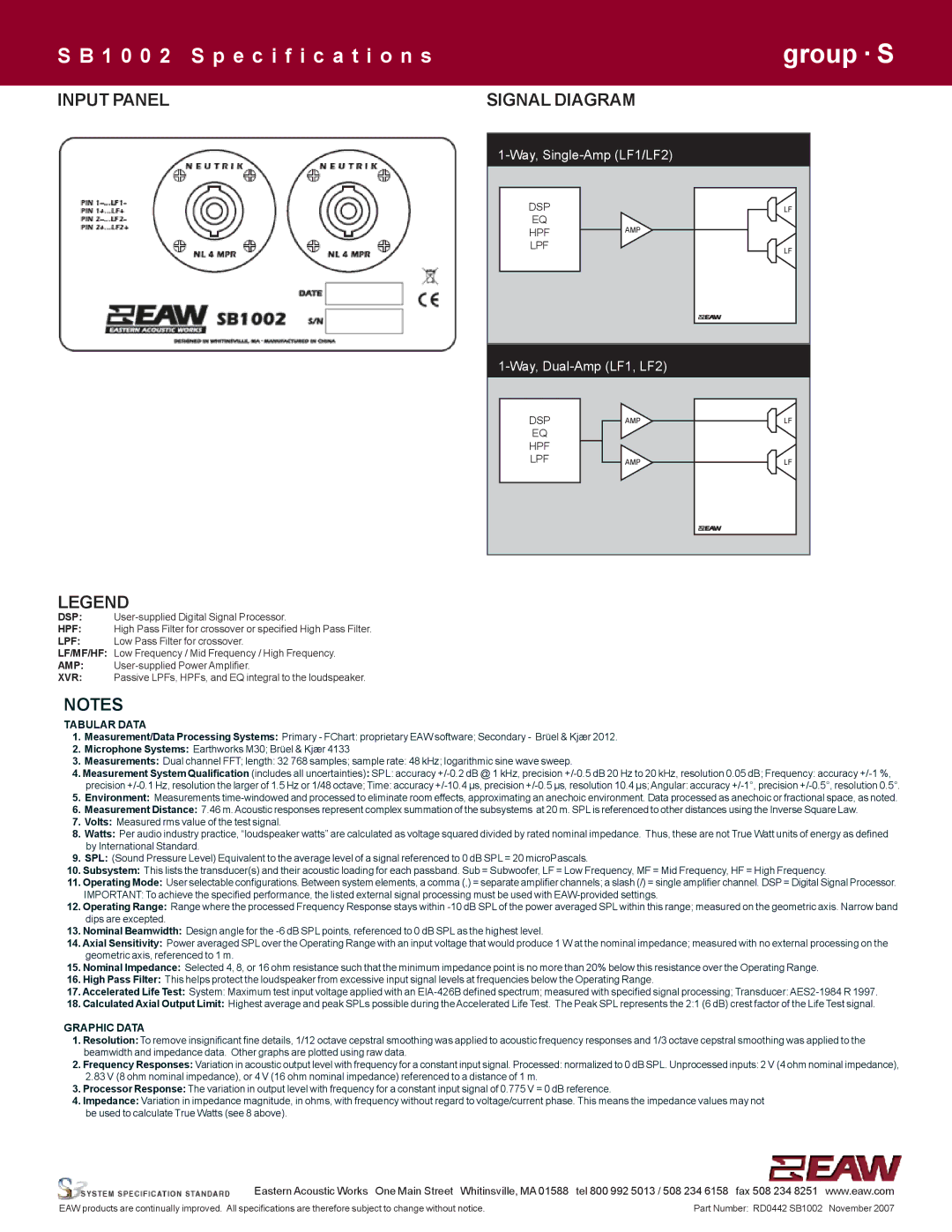SB1002 specifications
The EAW SB1002 is a remarkable addition to the realm of professional audio solutions, designed to deliver superior performance and sound quality for a variety of applications. As a powerful subwoofer, the SB1002 is tailored for live sound reinforcement, installation, and portable sound systems, making it a versatile choice for audio engineers, live performers, and event organizers.One of the main features of the EAW SB1002 is its dual 12-inch high-excursion woofers, which are specifically engineered to provide deep, impactful bass response. This design allows the subwoofer to reproduce lower frequencies with precision, ensuring that the audience can feel the music as much as hear it. The SB1002 is capable of delivering an impressive maximum SPL (Sound Pressure Level), making it suitable for large venues and outdoor events where powerful bass reinforcement is required.
The enclosure of the SB1002 is constructed from high-quality plywood, providing durability and rigidity while minimizing unwanted vibrations. Its compact design and lightweight construction facilitate easy transport and setup, catering to the needs of touring professionals and event coordinators alike. Additionally, the subwoofer features a robust pole mount, enabling seamless integration with a variety of speaker systems.
EAW has incorporated advanced technologies in the SB1002, such as a custom-engineered, built-in digital signal processing (DSP) system. This innovative feature allows users to optimize the subwoofer's performance based on the specific characteristics of the venue and the requirements of the audio system. The DSP provides various presets for different applications, ensuring that the SB1002 can perform at its best in any environment.
Another notable characteristic of the SB1002 is its dual-channel input, which enhances its versatility and allows for easy connectivity to a range of audio sources. Whether being used in a live concert, corporate event, or permanent installation, the EAW SB1002 combines cutting-edge technology with a user-friendly design to meet the demands of today’s audio professionals.
In summary, the EAW SB1002 subwoofer stands out due to its superior bass performance, durable construction, advanced DSP capabilities, and versatile connectivity options. It is an essential tool for achieving an immersive audio experience, making it a top choice for professionals in the live sound industry.

